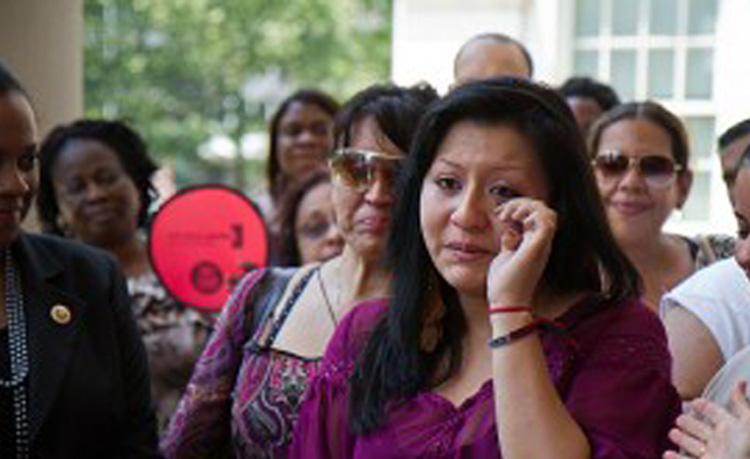
Attempted suicides among Latina youths continue to occur at higher rates than other youths, sometimes twice as high
Doctor shares research in talk
Attempted suicides among Latina youths continue to occur at higher rates than other youths — sometimes twice as high.
Dr. Luis Zayas, dean of the Robert Lee Sutherland Chair in Mental Health and Social Policy at the University of Texas, broached the topic with 180 professionals and members of the community to examine the numbers and explore contributing factors for Latina youths attempting suicide.
“The topic is one of the most serious situations we have in the country,” Zayas said. “Which is that young Hispanic females, Latinas, in the teenage years have the highest rates of suicide attempts of any teenage group — white, African-American, Asian and so on.”
“And it’s been like that for a very long time. It’s not a new phenomenon,” he said. “It’s been since I entered the field in the mid-‘70s. We just didn’t have enough information at that time to say this is a real serious phenomenon.”
Zayas spoke at Friday’s San Angelo Texas Exes monthly speaker series, sharing his research on “Why do Young Latinas Attempt Suicide so Often?”
Through his own research and research conducted by the Centers for Diseases Control and Prevention, Zayas presented documented rates from 1995 to 2013 that showed the number of Latina youths who attempted suicide consistently remained higher across the country.
Zayas discovered the earliest evidence of Latinas attempting suicide was in the late 1950s, but such data didn’t get much traction until the CDC launched its Youth Risk Behavior Surveillance System in 1991.
The surveillance system includes a national school-based survey conducted by the CDC that monitors six types of health-risk behaviors that contribute to the leading causes of death and disability among youth and adults, including behaviors contributing to unintentional injuries and violence; sexual behaviors contributing to unintended pregnancy and sexually transmitted diseases, including HIV; alcohol and other drug use; tobacco use; unhealthy dietary behaviors; and inadequate physical activity.
“In 1995 (young Latinas) had the highest rate, which was 1 in 5 girls. Right now it’s about 1 in 7, and it’s been like that for about the past 20 years,” he said. “I think that it’s important to clarify that we’re talking about suicide attempts, not completed suicides.”
“Our girls have a very low rate of completed suicide, but an attempt could easily become a death by suicide if the timing is off, if no one catches her before she attempts or immediately after she takes the pills,” he said. “The thing is, one attempt leads to a second attempt, which leads to a third, and so it really becomes a real problem.”
Zayas said Latinas attempting suicide isn’t contained to “just one part of the country or for one group — Mexicans, Puerto Ricans, and Dominicans — but generally all Latinas.”
“We think that it’s this convergence of basically three things: It’s the cultural traditions that the immigrants bring with them from Latin America about the beliefs about what a girl should be like, things she should do, how she should behave; then her own kind of personal development — teenage years are kind of rough years in general — kids are struggling with an identity with becoming more separate from their parents; and then there is how well the family functions,” he said.
The hourlong presentation was held in the LeGrand Alumni and Visitors Center that was sponsored by San Angelo resident Trinidad Aguirre, who was astonished by the numbers and wanted to do what he could to help spread awareness in San Angelo.
Suicide is an important issue, and because it was about Hispanic individuals it struck a chord with him, he said.
“Growing up as a Hispanic, I know how the Hispanics have a tendency to internalize and not vocalize their feelings.” He said he hoped the presentation would help people understand the importance of families being open with their feelings.
Sharon Kulig, president of San Angleo Texas Exes, was also stuck by the importance of Zayas’ topic and wanted to share it with community members. She said she was pleased with the turnout, including city officials, first responders, school district representatives and mental health professionals.
“This is San Angelo’s gain, hopefully, today to take cutting-edge research and say we started a dialogue about an incredibly important issue of which many of us were unaware,” she said.
“If we can as a community be sensitive to the stunning statistics about suicide rates among our friends and neighbors — and I couldn’t have agreed more with Dr. Zayas that they are all our children — we can reduce down even the likelihood of even one little girl seeking a permanent solution to a temporary situation.”
